White chocolate is a sweet confection made is typically made by combining cocoa butter, sugar, milk solids, lecithin, and vanilla. Mmm. Delicious.
In our post about ruby chocolate, we mentioned that until 2002 the FDA wouldn’t allow white chocolate to be called “chocolate.” Apparently that raised a few questions — like, “what is white chocolate made of?” and “what makes chocolate chocolate?” and “why is my mouth so full of chocolate right now?” The answer to the last one is that’s what nature intended.
For the others, here’s what you need to know about white chocolate. (Other than it’s delicious in peppermint bark.)
Is White Chocolate Really Chocolate?
White chocolate is not made from the ghosts of milk chocolate bunnies, like we originally suspected. It is made from cocoa butter, sugar, milk solids, lecithin, and vanilla. And dead bunnies.
When manufacturers make chocolate, they roast and grind cocoa beans to create chocolate liquor, which is a mixture of cocoa butter and cocoa fiber from the bean. This is then processed to create cocoa solids. For white chocolate, they remove the cocoa solids from the chocolate liquor and only the cocoa butter remains. To this, they add sugar, milk, vanilla, and other ingredients.
And, that’s why white chocolate doesn’t really taste like chocolate. Some people love the unique flavor of white chocolate. Others think it tastes like a mix of butter, old milk, that stick that comes with Fun Dip, and forgotten dreams.
Confused yet? Here’s a breakdown of some chocolate terminology:
- Chocolate liquor: the solid form of cocoa mass that’s produced when the cocoa beans are roasted and ground. It contains approximately half cocoa butter and cocoa solids.
- Cocoa butter: a vegetable fat located within the cocoa bean that helps gives chocolate its creamy quality.
- Dry cocoa solids (or cocoa fiber): what remains after the cocoa butter has been extracted from the chocolate liquor. The higher the dry cocoa solid percentage in a product, the more intense chocolate flavor it has. An easy way to think about it is that cocoa powder is made from 100% cocoa solids.
- Lecithin: a fat made from eggs or soy that is added to chocolate products. Its role as an emulsifier is to help hold the ingredients together.
Does White Chocolate Contain Caffeine?
Because it comes from the cocoa bean, white chocolate contains trace amounts of caffeine and theobromine. According to Lindt, 1 oz of white chocolate contains less than 2 mg of caffeine (compared with 20mg in 1 oz of dark chocolate and 6mg in 1 oz of milk chocolate.) If you want caffeine and white chocolate, order a Starbucks White Chocolate Mocha as it’s got 150mg. (Their new at home creamer does not.)
https://www.instagram.com/p/B0OBcUWBKWu/
WHAT IS THE POINT OF WHITE CHOCOLATE?! IT DOESN’T CONTAIN ANY CHOCOLATE!
Ok, first of all, stop screaming. Second, of all, the FDA agrees with you. Or, rather, it did until 2002 after Hershey and the Chocolate Manufacturers Association of America asked them kindly to change their ways. It’s like we always say, mo’ money mo’ power to rename things.
According to the FDA, white chocolate must contain “minimum of 20 percent cocoa butter, a minimum of 14 percent of total milk solids, a minimum of 3.5 percent milkfat, and a maximum of 55 percent nutritive carbohydrate sweeteners.” (“Nutritive carbohydrate sweeteners” means sugar in case you’re not fluent in government-ese.)
If you love white chocolate, you really need to try our White Chocolate Cranberry Scones.
Still skeptical? Science says it’s chocolate too: As professor Zaki Berk writes in Food Process Engineering and Technology, chocolate is “a dispersion of solid particles in a continuous matrix of cocoa butter,” with “melting in the mouth” as one of its key properties. White chocolate fits the description. Though, Keanu Reeves probably does too.
Fine. So Who Invented White Chocolate?
Nestlé invented white chocolate. When they were making Nestrovit, the children’s vitamin-enriched milk formula with the catchiest name we’ve ever heard, they added cocoa butter to the mixture to create a solid tablet and white chocolate was born! (National white chocolate day is September 22nd in case you want to get it something for its birthday.)
It wasn’t long until Nestlé realized there was money to be made by selling it without the vitamins, and they introduced white chocolate candy to the world in 1936 as the Galak Bar or Milkybar. Both are still sold, though any moment now the Galak Bar is going to get yeeted off a cliff by Don Draper.
(Eventually, in 1948, the U.S. got its own white chocolate bar, the Alpine White.)
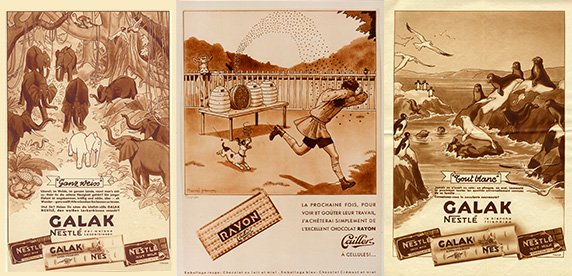
How Is White Chocolate Made?
The process for making white chocolate is similar to making milk chocolate, dark chocolate, or ruby chocolate — at least at first.
1. Harvesting
Cacao bean pods are harvested from cacao trees and must be harvested by humans, not machines, since they the beans don’t ripen at the same time.
Most chocolate comes from one of these cacao trees:
- Criollo: These trees were used by the Mayans. They’re also the rarest, so they’re used primarily by luxury chocolate brands and represent between 3 and 10% of the world’s chocolate production.
- Trinitario: A hybrid of Criollo and Forastero. It’s said to be higher quality than Forastero but the trees are hardier than the Criollo. Represents approximately 12% of the world’s chocolate production.
- Forastero: These trees are much hardier and disease-resistant than the Criollo tree and represents 85% of the world’s chocolate production.
- Nacional: Though technically a member of the Forastero family, it produces beans that have a very different flavor profile. They’re said to be “intense, with a floral aroma and a persistent mellow richness” and harbor a complete lack of bitterness. They were rediscovered in 2010 in Peru’s Maranon Canyon. (If you want to try it, Moonstruck’s Fortunato No. 4 chocolate bar is made with it.)
2. Fermentation
After harvesting the cocoa beans, farmers remove beans from the pods and let them ferment for five to seven days. During the fermentation process, the flavor develops and — through a combination of tropical air and a whole lot of chemistry — the sucrose (sugar) in the beans is converted into glucose and fructose (different types of sugar).
The beans are then dried in the sun and shipped to the chocolate maker.
3. Roasting and cracking
Cacao beans are then roasted in much the same way coffee beans are, minus the waxed-mustachioed hipsters. Roasting makes it easier to crack open the bean and remove its papery shell, leaving only bits of cocoa bean called “nibs.” These unsweetened nibs can be eaten on their own if you like chocolate for “health reasons.”
4. Extraction
The cocoa nibs are ground into a bitter-but-flavorful paste called chocolate liquor — also known as the “essence of the bean.” Cocoa butter can be extracted from the nibs at this stage using a press at this stage.
5. Blending
To make white chocolate, the extracted cocoa butter is then mixed with sugar, vanilla, milk, and lecithin.
- Is White Chocolate Really Chocolate? - August 8, 2019
- Ruby Chocolate: The Millennial Pink Chocolate is Now Available! - June 19, 2019
- A Beginner’s Guide to Healing Crystals - January 29, 2019
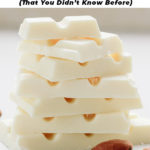
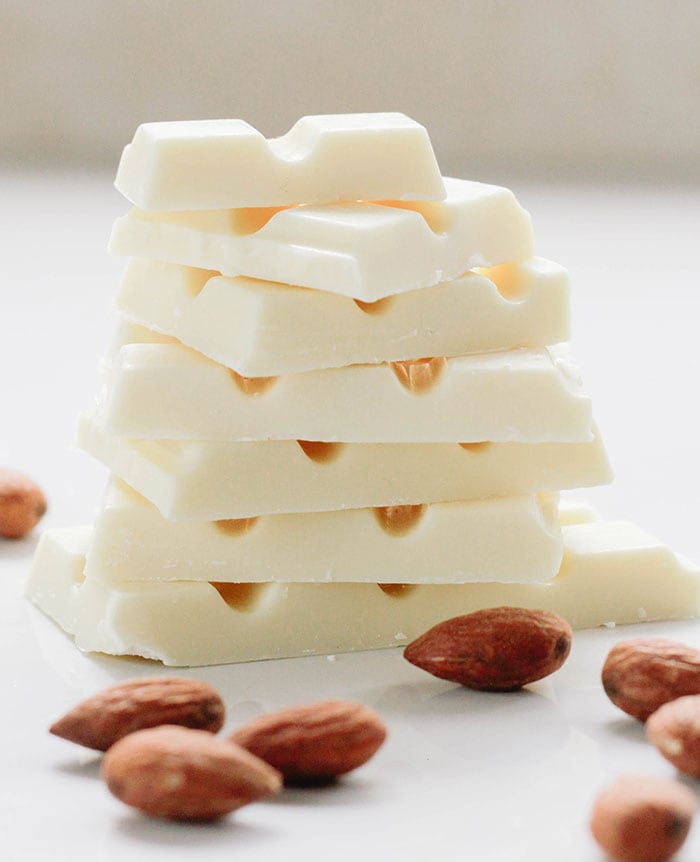
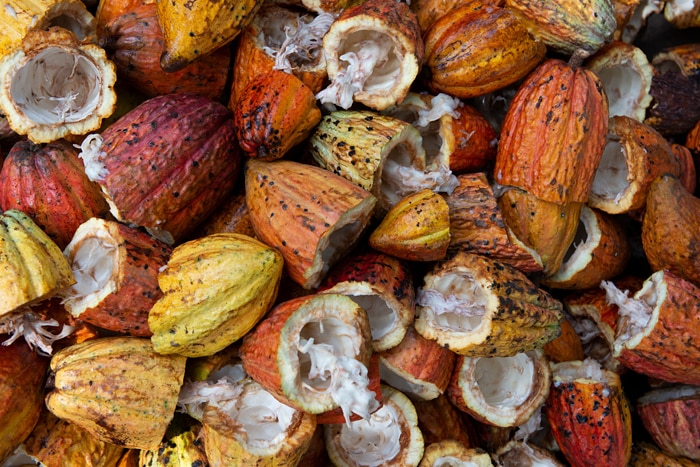
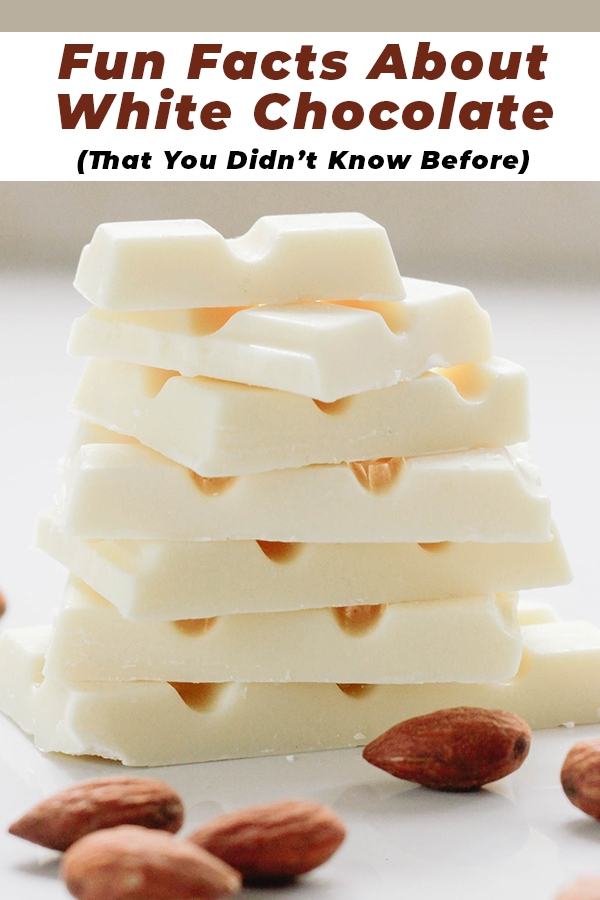


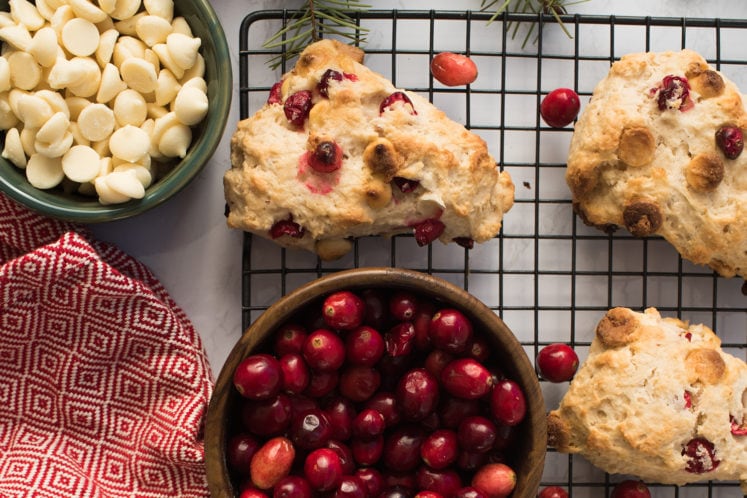

Leave a Comment